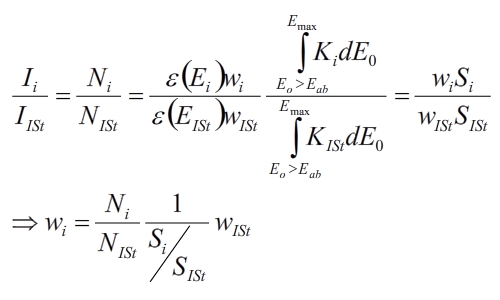Internal standard
As it was mentioned before, in TXRF the sample specimen is rather small; and is unfeasible to assess its aerial density. Moreover, it is difficult to ensure that the position of the dry residue in the sample carrier or the position of the sample carrier itself will be reproducible.
Therefore absolute sensitivities are seldom used in TXRF, instead relative sensitivities are preferred for calibration (sensitivities relative to the sensitivity of a particular element). This element is referred thus as ‘internal’ standard. For the determination of the relative sensitivities different standard solutions (either multi-elemental or single element standards) are spiked with some known amount of the internal standard and measured. For internal standard addition, some element that would not commonly be found in the sample is selected, such as Ga, Y or some Rare Earth Element.
Quantification model is favored by the use of internal standardization :

As this expression is valid for both, the element of interest and for the internal standard, the ratio Ii/IIst does not depend on sample aerial density, the geometry factor, the measurement time or even on the excitation flux intensity:
